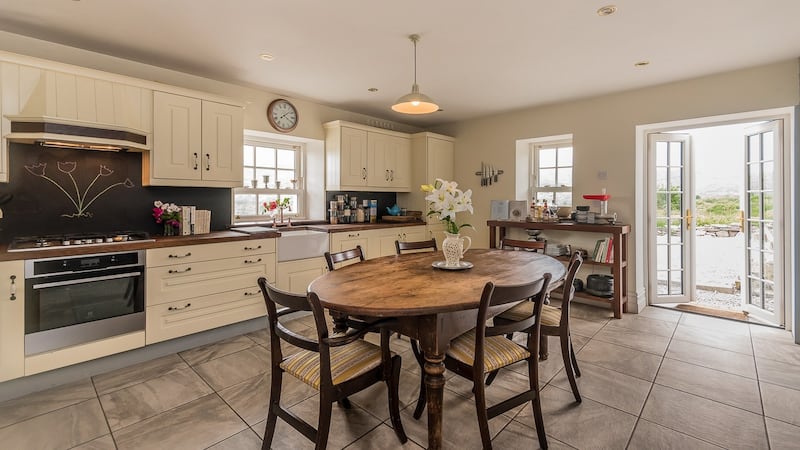Built in 1823 by William Jermyn, Scart House is a discreetly sited, single bay, single storey over raised basement Georgian house that captured the imagination of Tasmanian-born Amanda Geard, and her British fiance, Barry Stoffell, who happened on it in 2014 while scouring the country looking for a project.
They had met a decade earlier while working as geologists on a commercial exploration project in the Jordanian desert. While they spent a lot of time working in Africa they had the flexibility of being able to base themselves anywhere in the world and so had opted to buy an island in the north Atlantic just within Sweden’s Arctic Circle, Stoffell explains.
While the timber cabin was everything they had hoped for during the white nights of summer the annual six weeks of darkness in darkest winter and the storms, the kind that made it too dangerous to leave the house, finally got to them and they decided to move to the far more climatically temperate Ring of Kerry where they discovered Scart House.
0 of 10
Its stone piers and cast iron gates set the right tone, while the two-storey-plus attic listed house, capped with Valentia slate, its imposing granite exterior steps up to a first floor fan-lit doorway, recessed bay between side gabled projections, all set their hearts aflutter. Its southerly aspect, situated between Sneem and Derrynane, with sea views across Kenmare Bay and its proximity to the village of Castlecove were other factors in its favour.
Scart had already undergone extensive and sympathetic renovations under its previous owners but it was still far from complete. The property had come to market back in 2008 asking €985,000. The couple paid €216,500 for it in 2015, according to the property price register and did a lot of the repairs themselves.
That first winter they camped in one room. With only temporary glazing on the windows that was touch, says Gerry understatedly but this is a hardy couple, used to the outdoors who write for the UK-based Shooting Times. The refurb took two years instead of their planned 18months.
We had a good budget with about 20 per cent contingency but everything takes longer than you think and is about four times the size of a normal house, Stoffell says. “The scale was daunting. There was no plumbing or heating and its 34 windows for example had to be replaced by timber sash. Seven chimney flues have been lined and insulated to install wood-burning stoves. There isn’t an open fire in the house.”


The property, which measures 284 sq m / 3,057 sq ft, minus its attic, has 12 foot ceiling heights at hall level and the other rooms at this level almost 10 feet high.
The hall now has a stately black and white tiled floor and the drawing room, a dual aspect square space to the left, the formal dining room, painted a Georgian red, to the right, and the other rooms at this level all have oak timber floors, replacing the original pitch pine boards. The pair created panel-like work using beading in the reception rooms and lime plastered the stone exterior,
Three of the property’s five bedrooms, two of which are en suite, are also at this level.
Downstairs the couple installed underfloor heating throughout, making the heritage property warm-as-toast. It is where they do most of their living. There is a sizeable kitchen, with a Belfast-style sink, Aga and French doors leading out to a terrace and pergola where the couple have friends over for regular barbecues, warmed by a brazier.
They repurposed some of the first floor timber boards into a smart twin sink unit in a swish bathroom at garden level, complete with free-standing bath and sauna, a Scandi habit they picked up.
The property’s other two bedrooms are at this level although one is currently used as a study.
Now that the house is done they’re looking for another project, albeit a smaller one and want to stay in the area. They just need space for themselves and for their pair of Irish red setter dogs. “We are keen to move on to the next adventure.”
The property is asking €775,00 through agents Savills.




















